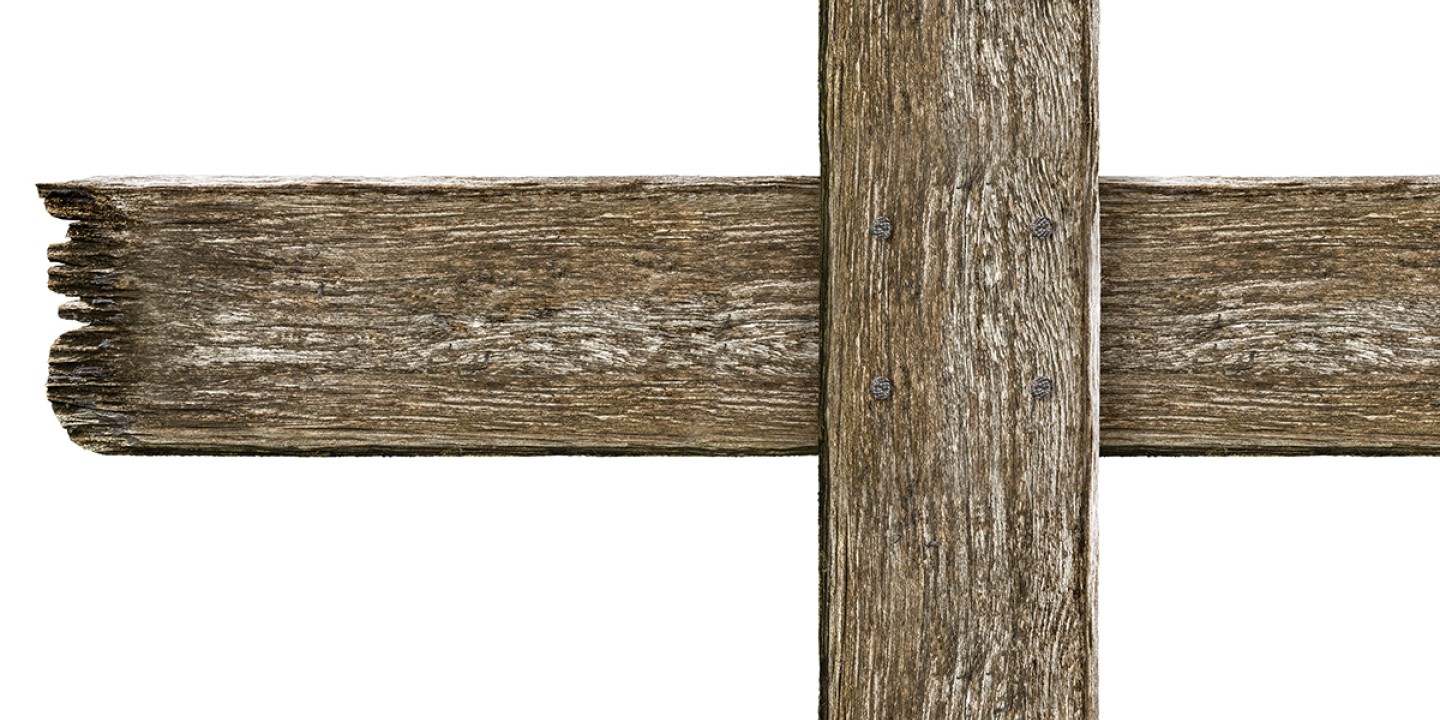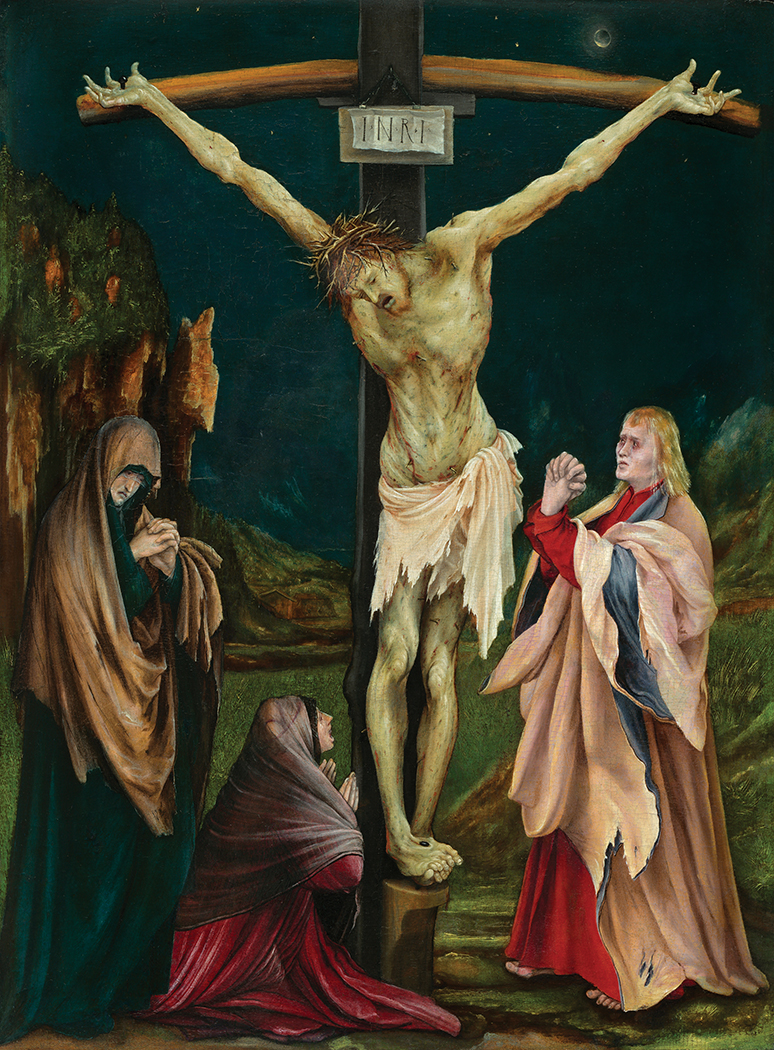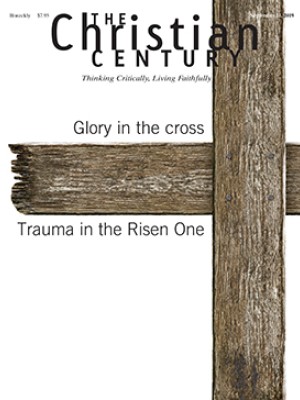
Long ago, before the mid-eighth century, John of Damascus gave voice to the way the Greek church fathers approached the cross: “We venerate the Cross of Christ, by which the power of the demons and the deceit of the devil were destroyed.” Following this tradition, Orthodox Christians through the centuries have consistently celebrated the cross as an emblem of victory. This emphasis, which is deeply rooted in scripture and the writings of the early church fathers, is manifest in Orthodoxy’s liturgical traditions.
Celebrating the crucifixion as a triumph may seem jarring to Western Christians, but not because they neglect the cross in their thought and piety. Several beloved Western hymns focus on the cross—among them, “At the Cross” (written by Isaac Watts in 1707), “Lift High the Cross” (penned by George Kitchin in 1887), and “The Old Rugged Cross” (authored by George Bennard in 1912). And many Western Christians wear a cross as a testimony to their faith in and commitment to Jesus Christ. In general, however, Western Christians see the crucified Christ as a suffering victim, enduring the divine judgment and paying the legal penalty for our sins. Any sense of triumph is usually reserved for the resurrected Christ.
Read our latest issue or browse back issues.
The preaching and writings of the apostles are replete with references to the cross of Christ. While the cross certainly entailed horrendous sufferings, it is striking that Paul also associates Christ’s cross with power. The apostle warns against faulty attitudes toward the life of the church in Corinth, “so that the cross of Christ might not be emptied of its power” (1 Cor. 1:17). He proceeds immediately to write that “the message about the cross is . . . the power of God” (1 Cor. 1:18). While not diminishing in any regard the sufferings Christ endured, Paul proclaims the victory of Christ on the cross.
After writing that the record of our sins has been set aside by God “nailing it to the cross” (Col. 2:14), the apostle writes, “He disarmed the rulers and authorities and made a public example of them, triumphing over them in it” (Col. 2:15). In this, Paul presents Christ on the cross as the victor, powerful over our enemies. Further in this vein, the apostle teaches that the “rulers of this age” (including both the humans involved and the demonic spiritual forces behind them) had not perceived the “wisdom of God” in what was happening when they condemned Jesus Christ, “for if they had, they would not have crucified the Lord of glory” (1 Cor. 2:7–8).
Those who are familiar with the wording in scripture might well read right over this startling apostolic designation for Christ without pausing to consider it closely. “The Lord of glory” is an incongruous, even absurd description of one enduring the ignominy of crucifixion. But in the opening chapters of 1 Corinthians, the apostle looks behind appearances and discerns what is at hand in the awful scene on Golgotha. He urges, “we preach Christ crucified, a stumbling block to Jews and folly to Gentiles, but to those who are called, both Jews and Greeks, Christ the power of God and the wisdom of God” (1 Cor. 1:23–24, emphasis added). Paul invites his readers—and the church through the ages—to discern all of this with him when he adds, “For the foolishness of God is wiser than men, and the weakness of God is stronger than men” (1 Cor. 1:25, emphasis added).
Such discernment, though, depends on the work of the Holy Spirit (1 Cor. 2:10). By the Spirit, faith sees what is really going on at the cross: while the heel of the seed of the woman is bruised, the serpent’s head is crushed (Gen. 3:15). This is beyond what mere human assessment can see or hear or conceive while looking at the cross, but it is “what God has prepared for those who love him” (1 Cor. 2:9). According to Paul, this is the way to interpret the crucifixion: in it, Christ—in divine weakness stronger than human power—is the glorious victor.
The church fathers also strongly emphasize the victory and power of the cross. Irenaeus of Lyons, commenting on a scriptural prophecy of the Messiah (Isa. 9:6), urges, “This [phrase] ‘whose government is upon His shoulder’ refers, allegorically, to the cross, upon which His shoulders were nailed: for that which was and is a reproach for Him, and through Him for us, the cross, that, he says, is His government, which is a sign of His reign.” Justin Martyr declares, “The concealed power of God was in Christ the crucified.”
This understanding is echoed among the earliest postapostolic leaders. The apostolic father Papias writes, “He defeated sin and condemned Satan, and through His death He spread abroad His righteousness over all.” The unnamed author of the Letter of Barnabas proclaims, “He Himself submitted, in order that He might destroy death and demonstrate the reality of the resurrection of the dead.” And Ignatius of Antioch declares, “Jesus Christ . . . died for us, in order that by believing in His death you might escape death.”
Similarly, Melito of Sardis boldly proclaims, “He killed death the killer of men” and “clothed death with shame.” Then he offers a poetic invitation in the name of the crucified one:
“I am the one,” says the Christ,
“I am the one that destroyed death
and triumphed over the enemy
and trod down Hades
and bound the strong one
and carried off man to the heights of heaven;
I am the one,” says the Christ.
Further, Melito urges,
Just as from a tree came sin, so also from a tree came salvation.
By the cross death is destroyed,
and by the cross salvation shines;
by the cross the gates of hell are burst,
and by the cross the gates of paradise are opened.
. . . The cross is the destroyer of hell.
Later church fathers also emphasize the victory and power of the cross. Athanasius of Alexandria repeatedly emphasizes it in his treatise on the incarnation. He declares, “His trophy over death was the Cross.” Later in the argument, he comments, “The death which they thought to inflict as a disgrace was actually a monument of victory against death itself.” Further, he boldly urges, “The Cross of the Lord is a sign of victory over death.”
Similarly, Rufinus observes, “The death to which He submits is going to result in the despoiling of death.” Maximus the Confessor affirms, “By being conquered deliberately, He conquered him who hoped to conquer and snatched the world from his dominion.”
Without depreciating or neglecting the suffering of Jesus Christ in any way, Orthodoxy has followed this patristic emphasis and has especially recognized and affirmed the triumph of the Savior on the cross. Reflecting on Jesus’ exhausted cry, “It is finished” (John 19:30), theologian and hierarch Kallistos Ware comments, “What has been fulfilled? We reply: The work of suffering love, the victory of love over hatred. Christ our God has loved his own to the uttermost” (The Orthodox Way).
Commenting on the inscription on the cross that indicted Jesus as king of the Jews, theologian Sergius Bulgakov writes, “the Crucifixion was His triumphal coronation.” He continues, “In the world He manifests His Kingdom by the meekness and obedience of crucified love. The cross is His instrument, and the crucifixion is His victory. . . . The sign of His victory is the cross” (Churchly Joy).
This may seem puzzling at first. But as The Lenten Triodion explains, “the Lord’s Crucifixion and His Resurrection . . . together form a single, indivisible action.” While Western Christianity often—though not always—sharply separates the crucifixion and the resurrection (and focuses primarily on Good Friday as the day of salvation), in Orthodoxy, “Calvary is seen in the light of the Empty Tomb”—and that light bathes the cross in a startling splendor.
Orthodox liturgical forms keep Calvary and the empty tomb together in joyful and grateful praise. In the matins service of the Sunday of the Adoration of the Cross (the third Sunday in Lent), the faithful sing, “This is the day of the veneration of the Precious Cross. Now it is placed before us and shines with the brightness of Christ’s Resurrection.” Soon thereafter they chant, “Your Cross, O Lord all-merciful, is honored by the whole world, for You have made the instrument of death into a source of life.”
Orthodoxy revels in the Paschal Triduum (the three days beginning with Thursday evening, known as Maundy Thursday in Western Christianity, and ending on Easter Sunday, which Orthodox often refer to as Pascha), holding together in inter-interpretive exultation the mysterious economy of salvation. On Great (Good) Friday, the faithful declare in song, “Your Cross, O Lord, is life and resurrection to Your people. . . . We sing to You, our crucified God.” On Holy Saturday, early in the matins service, Orthodox solemnly intone, “You who are the Life were laid in a tomb, O Christ. . . . We honor Your burial and Your sufferings, through which You have saved us from corruption.”
Orthodox Christians also sing of the triumph of the cross each September as they celebrate the Sunday of the Universal Exaltation of the Precious and Life-Giving Cross. In vespers for that day, Orthodox Christians sing, “The Cross is raised on high, and urges all the creation to sing the praises of the undefiled Passion of Him who was lifted high upon it. For there it was that He killed our slayer, and brought the dead to life again” (The Festal Menaion). In the matins service that day, they exult, “Through the Cross we all are drawn to God, and death has been forever swallowed up.” They confess, “We venerate Your Cross, O Master, and we glorify Your holy Resurrection.”
At the same service, they encourage all people to “venerate the Cross of Christ, through which resurrection has been granted to the world” and then poetically expand that invitation: “Come you people, and looking on this marvelous wonder, let us venerate the might of the Cross. For a tree put forth the fruit of death in Paradise; but life is the flower of this Tree on which the sinless Lord was nailed.”
From a strictly historical viewpoint that insists on clear temporal succession from cross to resurrection, this might sound jarring. But to Orthodox ears it is simply the embrace of joyful faith. Ware acknowledges the tension when he writes, “The Crucifixion is itself a victory; but on Great Friday the victory is hidden, whereas on Easter morning it is made manifest.” This is what enables Orthodox Christians to confess, in the words of Bulgakov, “The cross was the sign of victory, and Golgotha was the place of victory.”
The difference between Western Christianity and Orthodoxy in viewing the cross also manifests itself in pictorial representations of the crucifixion. In Western Christianity, paintings of the crucifixion often include the sign of accusation affixed to the cross. It usually appears as I. N. R. I., which stands for the Latin “Iesus Nazarenus, Rex Iudaeorum,” or “Jesus of Nazareth, the King of the Jews” (John 19:19). Historically accurate, this abbreviation refers to the supposedly criminal charge for which Jesus Christ was executed.
A significantly different sensibility is found in most Orthodox icons of the crucifixion. In addition to or instead of I. N. R. I. (in whichever language is used on the icon), the wording that commonly appears is “the King of glory.” As Andreas Andreopoulos points out in Metamorphosis, in a typical Orthodox icon the “derogatory sign written by the executors has been changed,” and with the alternative posting, Jesus Christ is “seen from the perspective of his victory over death—even at his execution.”
This is more than just a nod in the direction of Paul’s comment that the rulers of this age “would not have crucified the Lord of glory” (1 Cor. 2:8, emphasis added). Unquestionably, the church fathers—and Orthodoxy after them—recognized that this crucified one is the victor, on the cross, over sin and death. This would have been sufficient to suggest a revision of the content on the sign.
But those who have studied Orthodox iconography know that every item in an icon—from the way the icon board and the painting materials are prepared to the choice of colors and styles of clothing to the stance of the ones depicted—is carefully planned to portray the mysteries of the faith and point to their rich significance. Given this, it is striking that the common crucifixion sign declaration on an Orthodox icon is a citation from Psalm 24. There the summons is given, “Lift up your heads, O gates! and be lifted up, O ancient doors! that the King of glory may come in” (Ps. 24:7). The question “Who is the King of glory?” is followed by a response, “The Lord, strong and mighty, the Lord, mighty in battle” (Ps. 24:8, emphasis added). When the summons and the question are repeated in the following verse, the answer is given, “The Lord of hosts, he is the King of glory” (Ps. 24:10).
The one who is to be welcomed in Psalm 24 is the mighty warrior who has defeated the enemies and is victorious. Orthodox icons of the crucifixion proclaim that Jesus Christ is that victor.

This divergence in perspective between Western Christian and Orthodox views of Christ on the cross is also reflected more broadly in artistic depictions of the crucified Christ. In classic Western Christian paintings, such as those by Peter Paul Rubens and Matthias Grünewald, the extremity of the suffering is graphically portrayed and suggested. Grünewald’s The Small Crucifixion presents a striking example of this. This artistic emphasis corresponds to the common Western Christian conception of the purpose of the crucifixion—namely, that Jesus had to endure the terrors of divine wrath against human sin in our place. This approach is particularly apparent in the 2004 film The Passion of the Christ, which seems to revel in the brutality and gore of Christ’s punishment and crucifixion.
By contrast, Orthodox icons of the crucifixion do not belabor or emphasize the horrors of the suffering. Rather, they show an almost regal dying Christ receiving the dismayed shock of believing onlookers. They show the expression of faith of the Roman centurion who confesses the crucified Christ as “the Son of God” (Matt. 27:54; Mark 15:39). The Crucifixion of the Lord, an icon by Fr. Theodore Jurewicz, in Christ the Saviour Orthodox Church in Harrisburg, Pennsylvania (see p. 22), shows an Orthodox icon of the crucifixion in historic Byzantine style:
![]()
These paintings exemplify the considerable difference that exists between the way Western Christianity and Orthodoxy view the cross. Both, of course, recognize that the incarnate Son of God died there for our sake. Both recognize that the crucifixion entailed appalling suffering. But Orthodoxy and Western Christianity differ in how they instinctively view the cross. Where Western Christianity tends to see it as judgment on Christ for our sake, Orthodoxy emphasizes that it is his victory for our sake.
These emphases are not inconsistent with each other, and both are biblically warranted. But they are at the heart of some of the primary differences between Orthodox and Western Christians. How the cross is viewed greatly influences other theological considerations, including the need for salvation, who the Savior is, what salvation entails, and how salvation is received.
This article is excerpted from James R. Payton Jr.’s forthcoming book, The Victory of the Cross: Salvation in Eastern Orthodoxy, © 2019 by James R. Payton Jr. Used by permission of InterVarsity Press, www.ivpress.com. A version of this article appears in the print edition under the title “Crucified and triumphant.”



